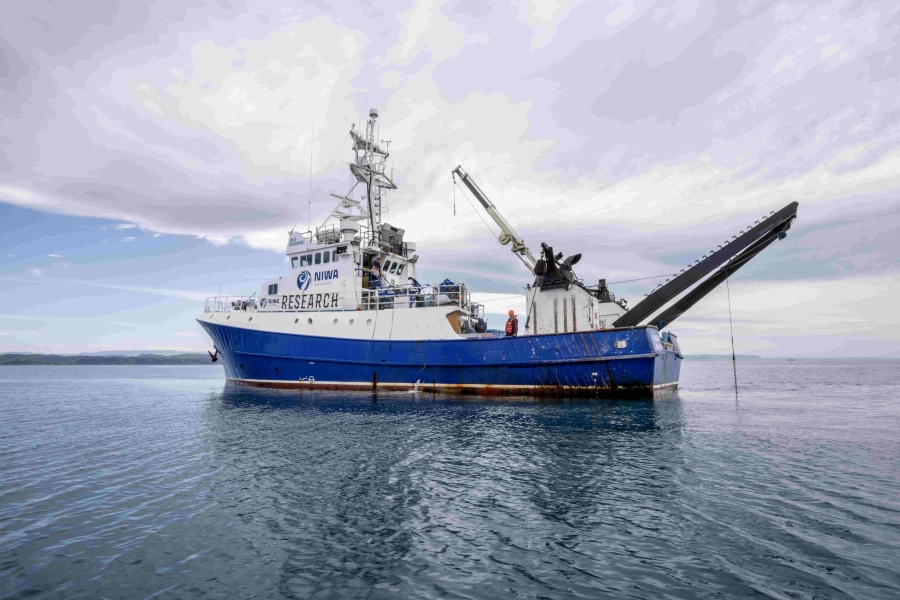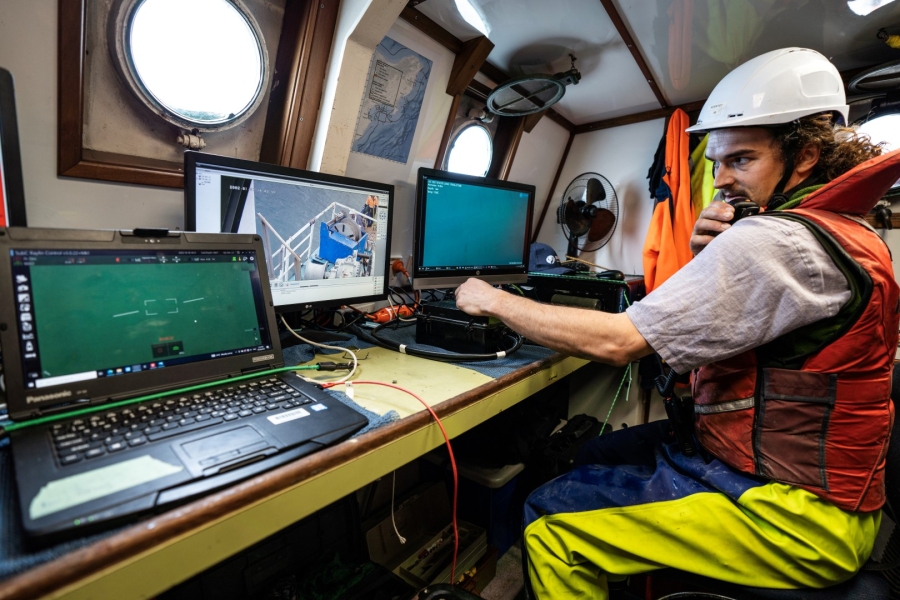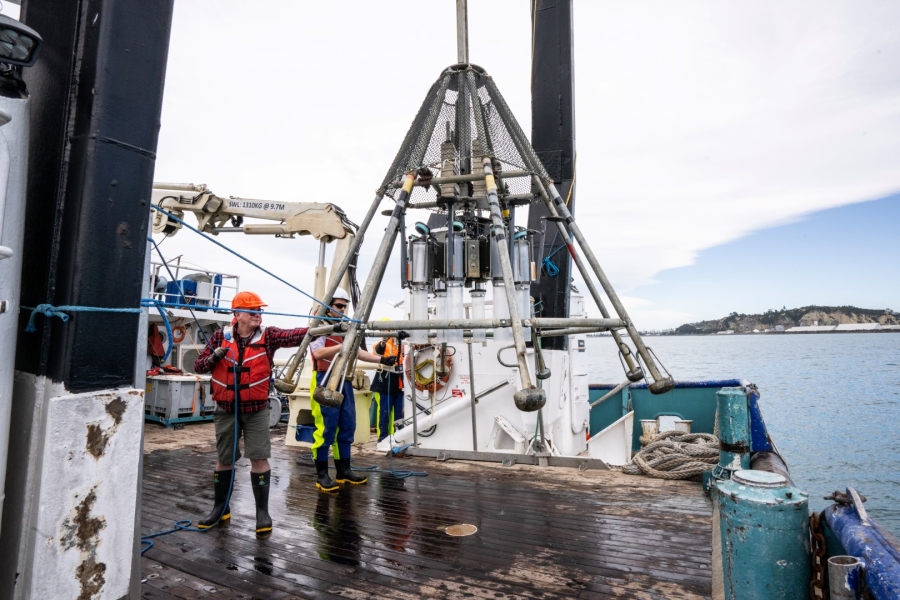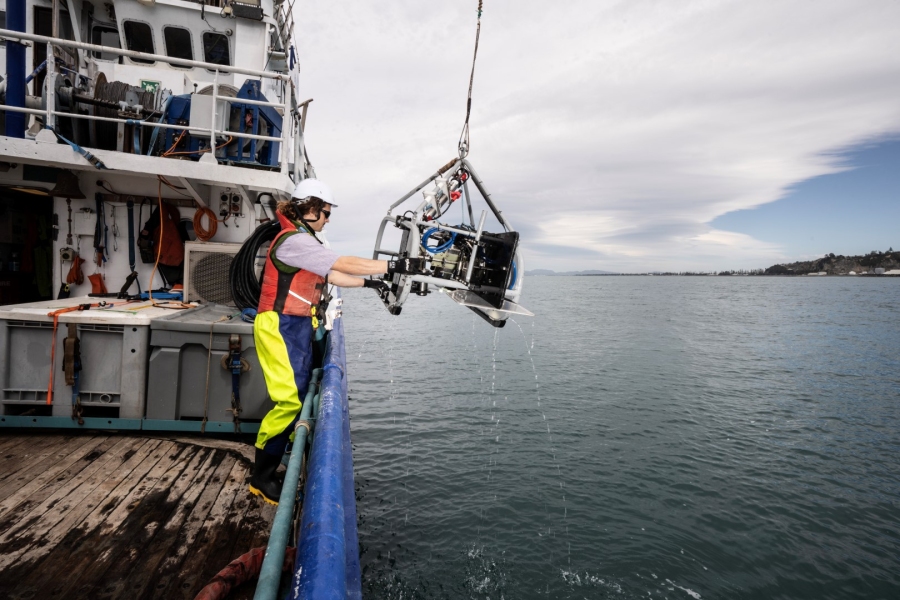Cyclone Gabrielle resulted in the transport of vast amounts of freshwater, sediment and debris to the marine environment of Te Matau-a-Māui/Hawkes Bay and Tairāwhiti/Gisborne regions.
This extreme event impacted marine life, especially on and around rocky reefs, but also in gravelly and muddy areas.
Fisheries New Zealand commissioned NIWA to conduct this research. The objective of this project was to understand sediment impacts from the cyclone on marine environments to enable rapid fisheries management decisions. As part of these surveys we mapped selected areas of the seafloor, surveyed life on the seabed using a towed underwater camera, and obtained sediment core samples. NIWA used a combination of seafloor mapping, satellite imagery, sampling, and underwater cameras to explore the influence of the cyclone on seafloor ecosystems.
Two RV Kaharoa voyages (June and October 2023) focused on Multibeam (new and previously mapped areas), camera tows (impacts of sedimentation on fisheries habitats, e.g., smothering), and coring (sedimentation processes, infauna).Three main tools have been deployed: multibeam, towed camera, and a multicorer.
NIWA scientists created a model to explore the impacts and recovery of seafloor ecosystems after cyclones and other events that influence sediment levels in marine environments.
Results
Find out what they found in this report or view the interactive story map here




